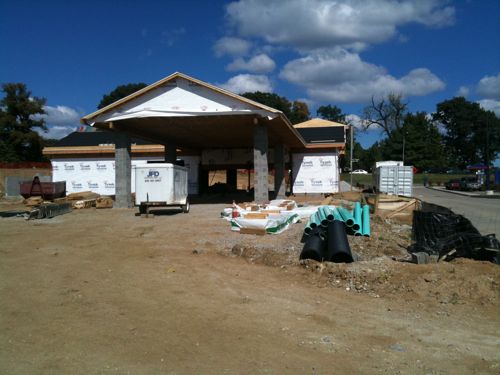Like the “where were you when Kennedy was shot” question from an earlier generation, we all know what we were doing as we watched on live television the unfolding of events on 9/11/2001. There I was in the living room of a client I had just met, watching that second plane hit the other tower of the World Trade Center. Any doubt about the first plane being lost in the fog was gone. I think what I remember most was the courage of those in the fourth plane, knowingly facing their own deaths, thinking of others on the ground — preventing the deaths of so many more.
In the weeks prior a friend and I had booked an exciting 17-day trip to the east coast — Washington DC, Pennsylvania and New York. Our flight to DC was October 19th. I had been to DC before but this time was obviously different — the Pentagon had a huge hole in the side. Still, people were out and about in the various neighborhoods. The Washington Monument, as you might suspect, was closed to visitors. We had planned a road trip from DC to New York via Frank Lloyd Wright’s Falling Water in rural Pennsylvania and thus had booked a rental car. Getting off the city bus at National Airport was weird — the place was a ghost town as flights were still not being permitted in or out. My first time in New York was surreal. Hotels and restaurants were eager to kick start the local economy so tourists were welcomed. As you approached “ground zero” as it was becoming known, the smell hit you. Neighbors in nearby Battery Park were hosing out the filters on their ventilation systems. The skyline I had seen my entire life in pictures was different, the Statue of Liberty was closed. We walked through the upper east side on the day a person died of anthrax poisoning on the upper east side. Stores had signs indicating they sold the anti-anthrax drug.
I visited New York again in the Fall of 2005. By then the debate about the future of the 16+ acre WTC site was in full swing. It should become a memorial park, it should be rebuilt as it was, and we shouldn’t build targets anymore were among the numerous viewpoints. Others advocated for much needed housing rather than simply replacing vast quantities of office space. Still others sought to return to the long abandoned street grid.
When Minoru Yamasaki was selected to design the World Trade Center his Pruitt-Igoe public housing, designed a decade earlier, was already troubled. When the ribbon was cut for the WTC in 1973 St. Louis had already begun to implode Yamasaki’s insensitive work here. In the 50s and 60s there was little opposition to such large scale projects save for Jane Jacobs. Today the debate over the 16+ acre site in lower Manhattan continues. Such a massive site in NYC is a rarity.
Back in St. Louis 16 acres is nothing to us. The Schnuck’s City Plaza development at Natural Bridge & Union is 20 acres, the Southtown Plaza strip center (former Famous-Barr site) is 11 acres. The old arena site, now called The Highlands, is 26 acres. The remaining Pruitt-Igoe site is roughly 33 acres. At 30 acres, Loughborough Commons, the Schnuck’s/Lowe’s albatross, is nearly twice as big as the WTC site. Yes — Loughborough Commons is 87% larger than the World Trade Center site! Wow, they are debating how many blocks and streets as well as how much office, retail and housing they can squeeze onto their 16 acres while here just getting the ability for an ADA-compliant sidewalk clearly takes more than action by the Board of Aldermen.
Thousands lost their lives six years ago and many more were strongly impacted by the loss of family, friends, co-workers, neighbors and simply a smile from a passing stranger no longer with us on the subway. Decisions made about the future of the WTC site, as well as development sites here in St. Louis and throughout the world, will too have an impact on people’s lives, although in a different way. We must ask ourselves why we are not creating places beyond just the short-term — a place to buy a cordless drill or get a latte at a drive-thru window. Architecture cannot made us better persons but our environment can and does impact how we all engage each other in our daily lives. We must do better. If not, we are simply funding a self-inflicted form of long-term terrorism.









